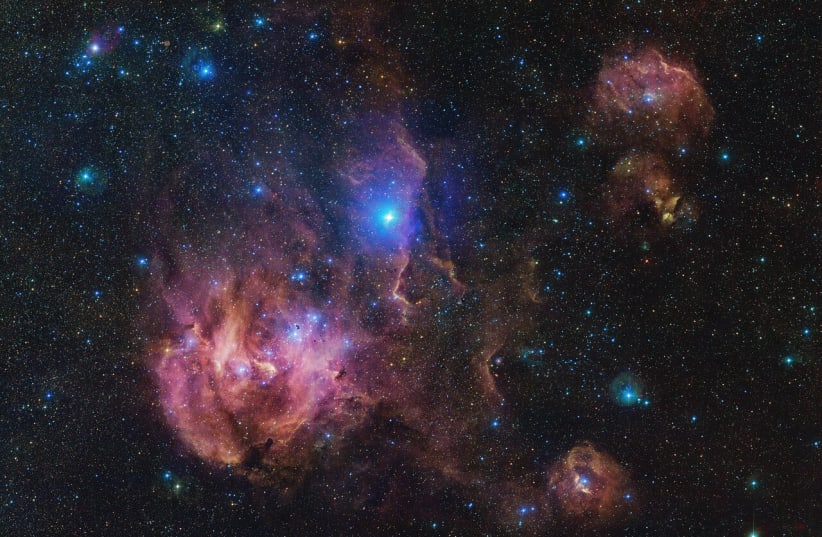In a celestial celebration of cosmic proportions, the European Southern Observatory (ESO) unwraps a dazzling holiday surprise—a festive spectacle known as the Running Chicken Nebula.
Illuminated by the radiant glow of young stars, this stellar nursery takes center stage in a mesmerizing 1.5-billion-pixel image captured by the VLT Survey Telescope (VST) at ESO's Paranal site in Chile.
Nestled within the constellation Centaurus, approximately 6,500 light-years away, the Running Chicken Nebula captivates with vibrant hues as young stars cast their intense radiation upon surrounding hydrogen gas, painting the cosmic canvas in shades of pink.
This celestial feast showcases the nebula's intricate beauty, revealing several distinct regions that collectively form the whimsically named Running Chicken Nebula.
The standout feature, IC 2948, serves as the brightest section, where imaginative viewers discern either the chicken's head or its rear end.

Ethereal touch to the celestial panorama
Graceful wisps of pastel-colored gas and dust dance across the cosmic scene, adding an ethereal touch to the celestial panorama.
Zooming in on the image unveils hidden treasures, such as Bok globules—small, dark pockets of dust and gas that defy the relentless onslaught of ultraviolet radiation from the energetic young stars.
These resilient pockets within the nebula bear witness to the dynamic interplay between stellar forces and their cosmic surroundings.
Venturing further into this celestial feast, other regions come into view, including Gum 39, Gum 40, and Gum 41, each contributing its own flair to the galactic gala.
Countless stars, resembling bursts of fireworks in the cosmic sky, add to the overall splendor of this expansive celestial mosaic.
Crafted meticulously, this image is a colossal mosaic composed of hundreds of individual frames seamlessly stitched together. The images, captured through filters allowing different colors of light, were harmoniously blended to create the final masterpiece.
The observations were orchestrated by the wide-field camera OmegaCAM on the VST, a telescope under the ownership of the National Institute for Astrophysics in Italy (INAF) and hosted by ESO in Chile's Atacama Desert—an ideal vantage point for mapping the southern sky in visible light.
Bearing witness to this celestial spectacle, viewers are encouraged to zoom in and traverse the intricacies of this cosmic tapestry.
